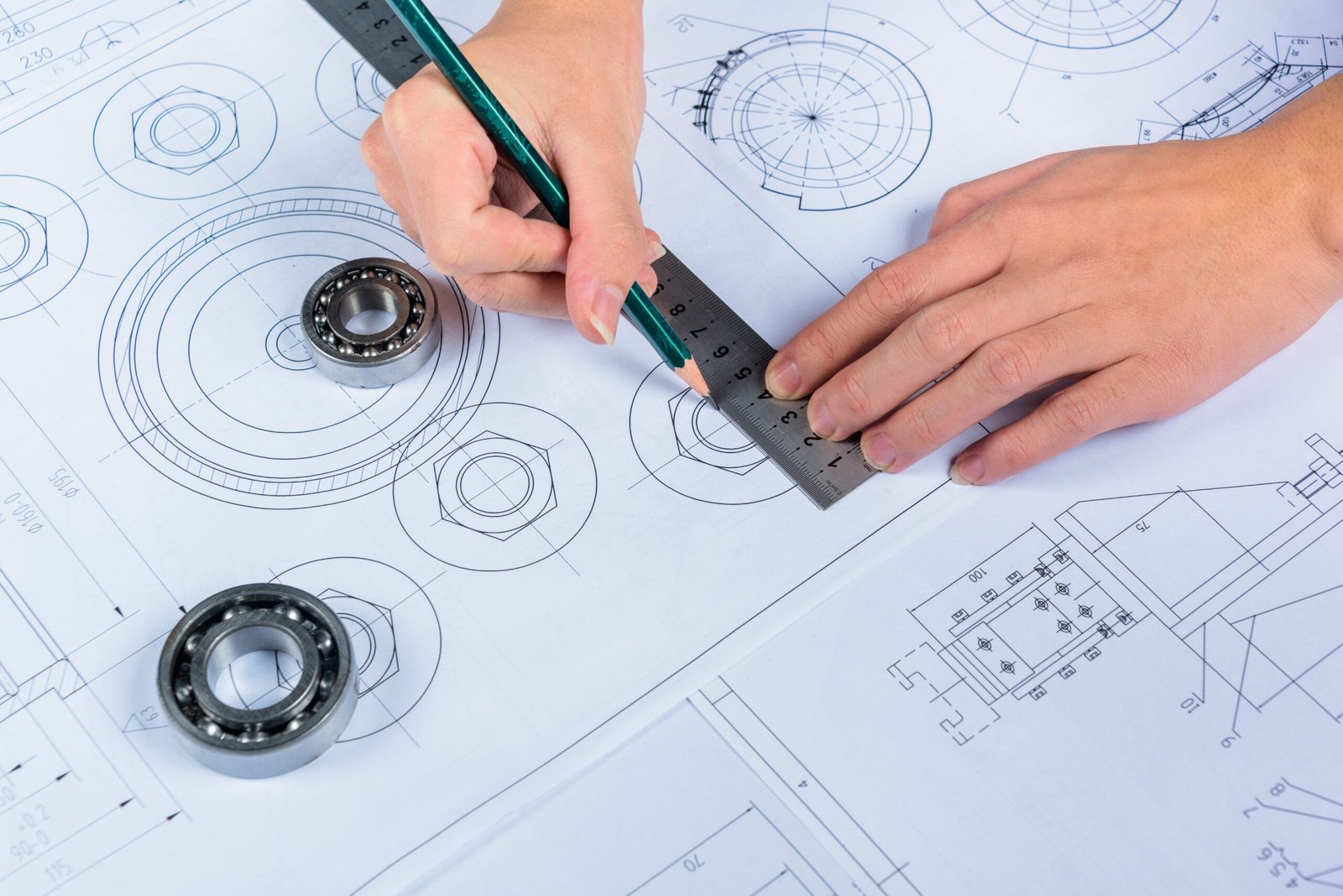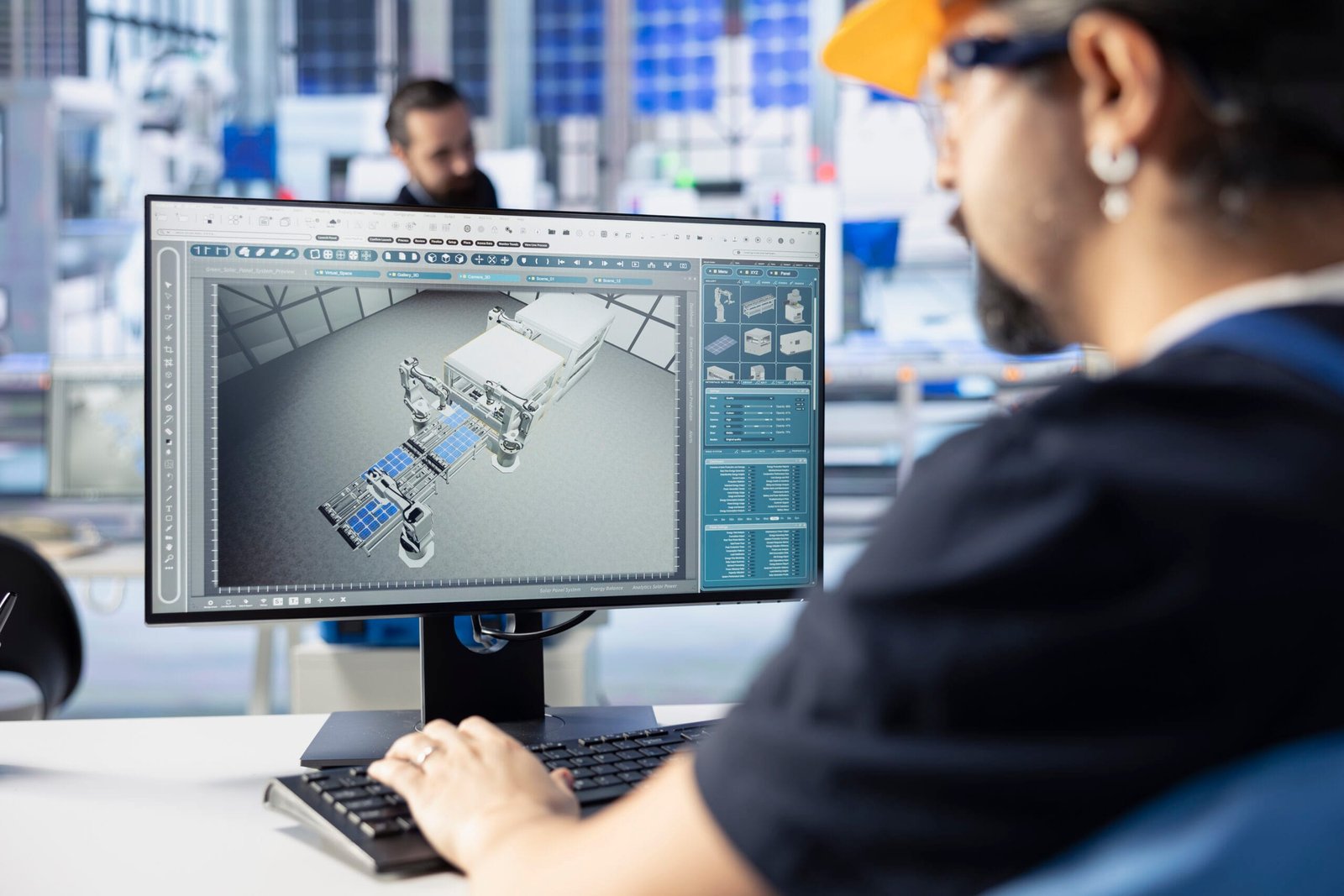Description:
Dive into the world of How to Start 3D Modeling with our comprehensive guide tailored for beginners at DesignHOK. Learn the tools, techniques, and steps needed to create accurate, visually stunning 3D models from scratch.
Introduction
In today’s competitive design industry, How to Start 3D Modeling has become a vital skill that brings ideas to life. For a platform like DesignHOK, which delivers high-quality mechanical and architectural design services, 3D modeling is the backbone of most projects. Whether you are a complete beginner or someone with basic knowledge, learning how to start 3D modeling the right way can shape your career and creativity.
This blog will walk you through the process of starting 3D modeling specifically for DesignHOK’s workflow. From selecting the right software to practicing key skills, this guide provides a clear and structured path to mastering 3D modeling.
What Is 3D Modeling?
How to Start 3D Modeling is the process of creating a mathematical representation of a three-dimensional object using specialized software. These digital models can represent real-world objects, buildings, machines, or even imaginative designs. At DesignHOK, 3D modeling is often used for creating detailed product designs, architectural renderings, and mechanical components.
Why 3D Modeling Is Essential for DesignHOK
DesignHOK offers services such as
- 3D Rendering Projects
- 3D Modeling Projects
- Mechanical Design Projects
- 2D Drafting & Engineering Projects
Among these, How to Start 3D Modeling plays a central role because it allows clients and engineers to visualize, revise, and improve designs before the actual production or construction begins. Accurate 3D models reduce errors, improve communication, and lead to more efficient workflows.
Step-by-Step Guide to Start How to Start 3D Modeling for DesignHOK
Step 1: Understand the Purpose of the Model
Before opening any software, understand what your 3D model is intended for. Ask yourself:
- Is this model for a mechanical component?
- Is it meant for a building structure?
- Will it be animated or rendered for a presentation?
At DesignHOK, your purpose will align with real-world applications such as client approvals, construction planning, or mechanical simulations. Knowing the goal helps you choose the right tools and design approach.
Step 2: Choose the Right 3D Modeling Software
There are several popular How to Start 3D Modeling tools out there. Here are a few that work well with DesignHOK’s project types:
- Autodesk Fusion 360: Ideal for mechanical parts and assemblies.
- SketchUp: Great for architectural modeling.
- Blender: Free and powerful, suitable for both modeling and rendering.
- AutoCAD 3D: Perfect for engineering-grade designs.
For mechanical modeling projects at DesignHOK, Fusion 360 and AutoCAD are the most commonly used.
Step 3: Learn the Basics of Modeling
Start by learning fundamental concepts:
- Vertices, edges, and faces: The building blocks of all 3D objects.
- Solid vs surface modeling: Understand the difference between modeling full objects and thin surfaces.
- Extrude, revolve, and loft: Basic modeling operations that allow you to turn 2D sketches into 3D objects.
Most software platforms have online tutorials, so begin by modeling simple objects like cubes, cylinders, or a basic house structure.
Step 4: Practice with Real-World DesignHOK Projects
Apply your skills by working on example projects similar to those at DesignHOK:
- Mechanical Design: Try modeling a gear, bracket, or engine part.
- Architectural Design: Practice modeling a small building, room, or staircase.
- Product Rendering: Create a 3D version of a real-world object like a chair or table, then render it with lighting and textures.
Always refer to technical drawings or sketches to match industry standards.
Step 5: Learn to Use Sketches and Blueprints
Most 3D models start from 2D sketches. Learn how to:
- Import blueprints or AutoCAD 2D files.
- Use reference images to trace accurate dimensions.
- Apply constraints like equal length or parallel lines in sketch environments.
At DesignHOK, converting 2D drafts into 3D models is a common workflow, especially in mechanical and architectural projects.
Step 6: Understand Materials and Textures
Adding realistic materials and textures brings your 3D model to life. Learn how to:
- Assign materials like steel, plastic, wood, or concrete.
- Use high-quality textures and mapping techniques.
- Adjust surface properties like glossiness, bump maps, and reflections.
This skill is especially useful for 3D rendering projects at DesignHOK, where visual presentation is key.
Step 7: Explore Lighting and Rendering Techniques
Once your model is complete, the next step is rendering it. This involves:
- Setting up light sources (e.g., sunlight, point lights, HDRI lighting).
- Choosing camera angles for best presentation.
- Using rendering engines like Cycles (Blender) or Arnold (Autodesk) to create photorealistic images.
Rendering is a powerful way to present your design to clients, making it a key part of your learning.
Step 8: Optimize for Performance
Large or complex models can slow down your workflow. Learn how to:
- Reduce polygon count where necessary.
- Use instances or blocks for repeated elements.
- Keep your file organized with proper naming conventions and layers.
DesignHOK values both detail and efficiency, so optimized models are crucial for fast revisions and collaboration.
Step 9: Collaborate and Get Feedback
Share your models with mentors, colleagues, or supervisors at DesignHOK. Getting feedback helps improve your technique and ensures your design meets real-world requirements. Consider using platforms like:
- Autodesk Viewer
- SketchFab
- PDF exports with annotations
Feedback also helps you improve presentation skills, which are critical when dealing with clients.
Step 10: Keep Practicing and Building Your Portfolio
Finally, the best way to grow is through consistent practice. Work on a variety of models, refine your skills, and create a digital portfolio. This not only showcases your abilities but also positions you for more advanced roles at DesignHOK or other design firms.
Include:
- Renders of your best models
- Screenshots showing different design stages
- Descriptions of the tools and techniques used
Conclusion
Starting How to Start 3D Modeling for DesignHOK involves more than just mastering software—it requires understanding the design purpose, visual storytelling, and precision. By following this step-by-step guide, you can build a strong foundation in How to Start 3D Modeling tailored to mechanical and architectural needs. With practice, feedback, and continuous learning, you’ll soon be ready to contribute to professional projects and make a real impact at DesignHOK.
FAQs
Q1: Do I need a powerful computer to start 3D modeling?
Not necessarily. While high-end specs are helpful, beginners can start with basic hardware and lightweight software like SketchUp or Blender.
Q2: Can I use free software for DesignHOK projects?
Yes. Blender and SketchUp Free are excellent tools to start learning. However, some DesignHOK projects may require professional tools like AutoCAD or Fusion 360.
Q3: How long does it take to become good at 3D modeling?
It depends on your dedication. With regular practice, you can start modeling simple projects within a few weeks and become proficient in a few months.
Q4: What is the best software for mechanical 3D modeling?
Fusion 360 and SolidWorks are top choices for mechanical design, especially for creating assemblies, simulations, and technical drawings.
Q5: Can I get 3D modeling jobs at DesignHOK as a beginner?
Yes, if you show a strong portfolio and a willingness to learn, DesignHOK welcomes passionate beginners for junior-level roles or internships.





